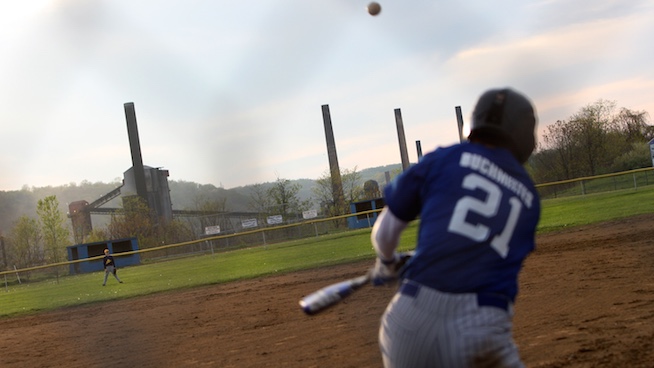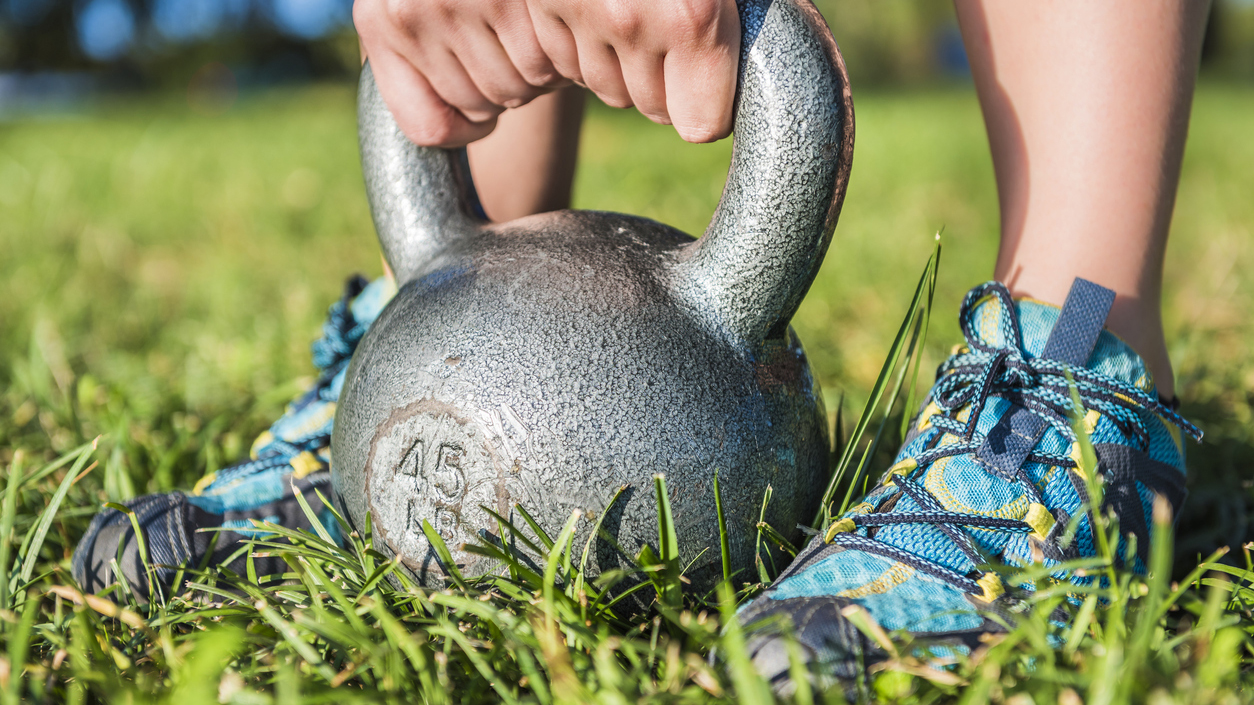Hockey and lacrosse often go hand-in-hand. The lacrosse I’m referring to, of course, is box lacrosse and the hockey I’m referring to is ice hockey. Field lacrosse is a little more popular in the United States, but here in Canada, summers are for box lacrosse and winters are for ice hockey (though soccer has gained a lot of popularity as a summer team sport choice).
The list is large of the athletes who played both growing up, from the great Wayne Gretzky to the great John Travares (Buffalo Bandits, lacrosse) to his nephew, John Travares of the Toronto Maple Leafs (NHL). The similarities go far beyond them both being team sports. Let me dive a little deeper into how playing these two sports compliment each other.
Playing Area
In many cases, the playing area of box lacrosse and the playing area of ice hockey is the same spot. The National Lacrosse League and the National Hockey League are both played during the winter and, just like the National Basketball Association, have the luxury of a crew of people who do the floor changes from sport to sport in their respective arenas.
In normal circumstances, hokey is played in the winter, then the springtime comes, the ice is removed and lacrosse begins. The boards stay in, the glass stays in and the only things that change are the playing surface and the nets.
Physical Contact
The fact that physical contact is allowed in both lacrosse and hockey is one main factor in how a player progresses in each sport. In each sport, you need to embrace the physicality that’s involved in reaching that next level. Every player is different, and some may like the contact a lot more than others, but you need to understand that it is part of the game.
You are running/skating with the ball/puck and not only have to worry about the other players getting in the way of a pass or shot but also other players trying to run into you and physically knock you away from the ball/puck.
Out of Bounds
Field hockey, basketball, soccer, or football have out-of-bounds markers where you may step and avoid physical contact or stop the play. Hockey and box lacrosse have boards that are in play, which increases the physicality and allows a faster pace game. There’s nowhere to hide.
Stick Skills/Hand-Eye Coordination
Both sports involve a stick. The stick controls the puck/ball. It’s not your hands. Your hands control the stick, and the stick controls the puck/ball. This takes an immense amount of concentration and coordination.
Once you get that coordination under control is when all the still skills start. You can watch any YouTube video of stickhandling skills in the National Hockey League or National Lacrosse League. The things you will see are incredible.
To receive a pass, goaltenders stopping the puck/ball from entering the net, and taking a shot all involve a great amount of hand-eye coordination. You are not just receiving the ball/puck in your hand, which, like football or basketball, is hard enough. You are handling an object, in which you use to receive the puck/ball. Then remember, this is being done while someone is trying to physically separate you from the ball/puck.
5-on-5
These two sports not only play in the same arenas but play with the same amount of players. The format is a little different, but there are 5 players on at any given moment.
Even the penalties are the same. When a penalty is called in either sport a player goes off and “sits in the box” for usually 2 or 4 minutes (major penalties are 5 minutes and misconduct penalties worth 10 minutes are also given).
Weight Transfer
Shooting to puck and ball is the main component of both hockey and lacrosse. The aim is to shoot the puck/ball in the net and past the goaltender. There is a great deal of rotational power involved in a good, hand shot in both lacrosse and baseball, but the greatest effect comes from solid weight transfer.
Field hockey is for right-shooting players, golf is predominately right and in most sports, including baseball, a left-handed athlete is somewhat rare. When it comes to hockey and lacrosse this is not the case. Though most of the players are right-hand dominant, you see a pretty even number of left-hand shooters compared to right-handed shooters.
When talking about weight transfer, this means that weight is shifted from the back leg to the front leg when shooting. Just as a right-handed pitcher in baseball transfers weight from the right leg (back leg) to the left leg (front leg), the hockey and lacrosse shot is the same principle. You will not get your hardest/fasted shot when the weight starts on the back leg and transfers to the front leg.
Work-to-Rest
The final and arguably the biggest factor is the work-to-rest ratio. This is very important to a strength and conditioning coach, as this is where energy systems come into play. Soccer is much different than hockey and lacrosse, which are both much different from basketball.
There are three main energy systems, and the key for performance coaches and players looking for proper conditioning is to determine how much time is spent in each energy system and how much rest is given.
Now, hockey and lacrosse have more of a work-to-rest(a)-to-rest(b) format. Your shift length differs slightly from hockey to lacrosse, but it’s important to understand that even when you are on the ice/floor you are not working at full capacity the whole time. Think of it like work-short rest-work-short rest-work-short rest-work-long rest rest-long rest, etc.
Your anaerobic system, of which there are two types is the system at work during your shift. The aerobic system sess action during your recovery time on the bench. With hockey and lacrosse having very close work-to-rest ratios, it’s only natural to play both.
RECOMMENDED FOR YOU
MOST POPULAR
Hockey and lacrosse often go hand-in-hand. The lacrosse I’m referring to, of course, is box lacrosse and the hockey I’m referring to is ice hockey. Field lacrosse is a little more popular in the United States, but here in Canada, summers are for box lacrosse and winters are for ice hockey (though soccer has gained a lot of popularity as a summer team sport choice).
The list is large of the athletes who played both growing up, from the great Wayne Gretzky to the great John Travares (Buffalo Bandits, lacrosse) to his nephew, John Travares of the Toronto Maple Leafs (NHL). The similarities go far beyond them both being team sports. Let me dive a little deeper into how playing these two sports compliment each other.
Playing Area
In many cases, the playing area of box lacrosse and the playing area of ice hockey is the same spot. The National Lacrosse League and the National Hockey League are both played during the winter and, just like the National Basketball Association, have the luxury of a crew of people who do the floor changes from sport to sport in their respective arenas.
In normal circumstances, hokey is played in the winter, then the springtime comes, the ice is removed and lacrosse begins. The boards stay in, the glass stays in and the only things that change are the playing surface and the nets.
Physical Contact
The fact that physical contact is allowed in both lacrosse and hockey is one main factor in how a player progresses in each sport. In each sport, you need to embrace the physicality that’s involved in reaching that next level. Every player is different, and some may like the contact a lot more than others, but you need to understand that it is part of the game.
You are running/skating with the ball/puck and not only have to worry about the other players getting in the way of a pass or shot but also other players trying to run into you and physically knock you away from the ball/puck.
Out of Bounds
Field hockey, basketball, soccer, or football have out-of-bounds markers where you may step and avoid physical contact or stop the play. Hockey and box lacrosse have boards that are in play, which increases the physicality and allows a faster pace game. There’s nowhere to hide.
Stick Skills/Hand-Eye Coordination
Both sports involve a stick. The stick controls the puck/ball. It’s not your hands. Your hands control the stick, and the stick controls the puck/ball. This takes an immense amount of concentration and coordination.
Once you get that coordination under control is when all the still skills start. You can watch any YouTube video of stickhandling skills in the National Hockey League or National Lacrosse League. The things you will see are incredible.
To receive a pass, goaltenders stopping the puck/ball from entering the net, and taking a shot all involve a great amount of hand-eye coordination. You are not just receiving the ball/puck in your hand, which, like football or basketball, is hard enough. You are handling an object, in which you use to receive the puck/ball. Then remember, this is being done while someone is trying to physically separate you from the ball/puck.
5-on-5
These two sports not only play in the same arenas but play with the same amount of players. The format is a little different, but there are 5 players on at any given moment.
Even the penalties are the same. When a penalty is called in either sport a player goes off and “sits in the box” for usually 2 or 4 minutes (major penalties are 5 minutes and misconduct penalties worth 10 minutes are also given).
Weight Transfer
Shooting to puck and ball is the main component of both hockey and lacrosse. The aim is to shoot the puck/ball in the net and past the goaltender. There is a great deal of rotational power involved in a good, hand shot in both lacrosse and baseball, but the greatest effect comes from solid weight transfer.
Field hockey is for right-shooting players, golf is predominately right and in most sports, including baseball, a left-handed athlete is somewhat rare. When it comes to hockey and lacrosse this is not the case. Though most of the players are right-hand dominant, you see a pretty even number of left-hand shooters compared to right-handed shooters.
When talking about weight transfer, this means that weight is shifted from the back leg to the front leg when shooting. Just as a right-handed pitcher in baseball transfers weight from the right leg (back leg) to the left leg (front leg), the hockey and lacrosse shot is the same principle. You will not get your hardest/fasted shot when the weight starts on the back leg and transfers to the front leg.
Work-to-Rest
The final and arguably the biggest factor is the work-to-rest ratio. This is very important to a strength and conditioning coach, as this is where energy systems come into play. Soccer is much different than hockey and lacrosse, which are both much different from basketball.
There are three main energy systems, and the key for performance coaches and players looking for proper conditioning is to determine how much time is spent in each energy system and how much rest is given.
Now, hockey and lacrosse have more of a work-to-rest(a)-to-rest(b) format. Your shift length differs slightly from hockey to lacrosse, but it’s important to understand that even when you are on the ice/floor you are not working at full capacity the whole time. Think of it like work-short rest-work-short rest-work-short rest-work-long rest rest-long rest, etc.
Your anaerobic system, of which there are two types is the system at work during your shift. The aerobic system sess action during your recovery time on the bench. With hockey and lacrosse having very close work-to-rest ratios, it’s only natural to play both.









